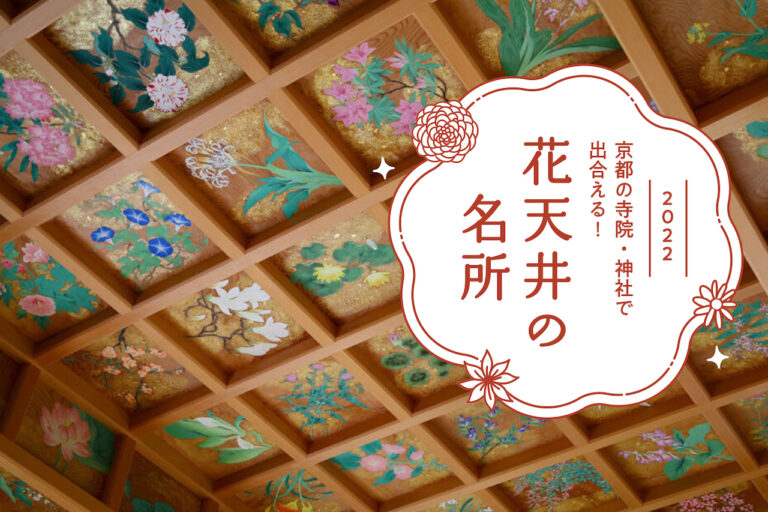
Meet at Temples and Shrines in Kyoto! 10 Places to Visit for Flower Ceilings
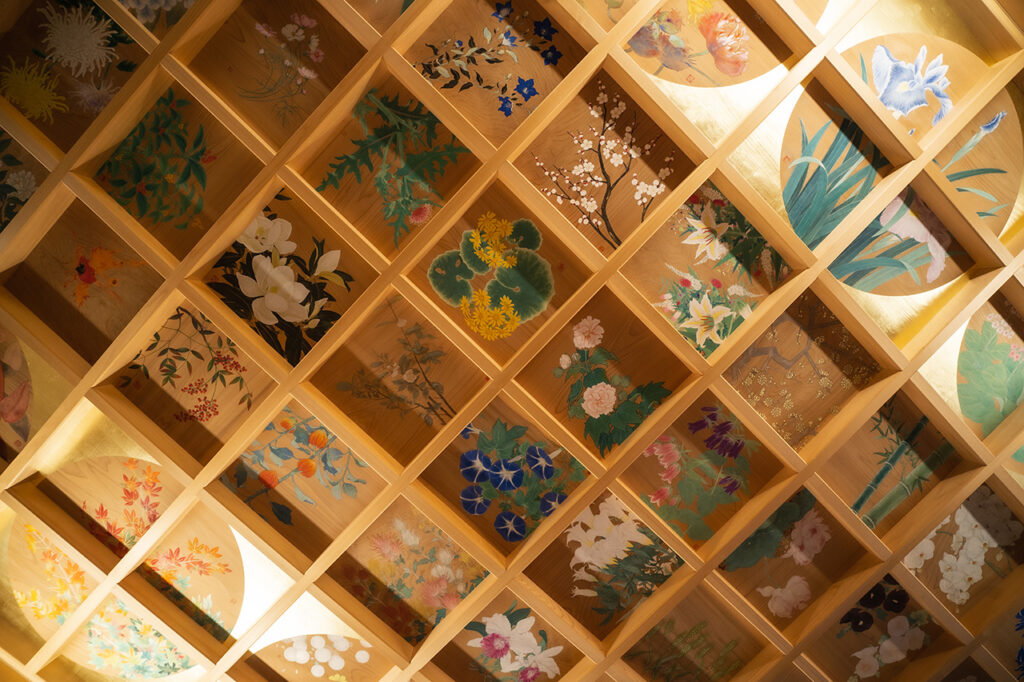

Saga-in Temple was originally built as a detached palace for Emperor Saga and Empress Danrin upon their marriage in the early Heian period (794-1185), and its founder was Kobo-Daishi Kukai. The temple was reorganized as a temple in Jougan 18 (876), and until the beginning of the Meiji period, the emperor or a member of the imperial lineage served as the head priest of this prestigious temple. It is also the head temple of the Saga school of ikebana, and is known as a temple of flowers, with many fusuma (sliding door) and ceiling paintings depicting flowers.
The predecessor of Saga-in Temple was built as a detached palace for Emperor Saga upon his marriage to Empress Danrin in the early Heian period (794-1185). The temple was dedicated to Kobo-Daishi Kukai as its founder, and was converted into a temple in Joukan 18 (876). It is a prestigious monzeki temple where the emperor or a member of the imperial lineage served as a monzeki (abbot) until the beginning of the Meiji period (1868-1912). The temple is also the head temple of the Saga school of ikebana, which was inherited from Emperor Saga's love of plants and trees, and is known as a temple of flowers, with many fusuma (sliding door) paintings and ceiling paintings depicting flowers. There are 440 ceiling paintings in three locations on the temple grounds. Reimeiden is not open to the public, but the ceiling paintings in Renge-den near Osawa Pond can be viewed only during special openings, and those in Yasui-do can be viewed at any time.
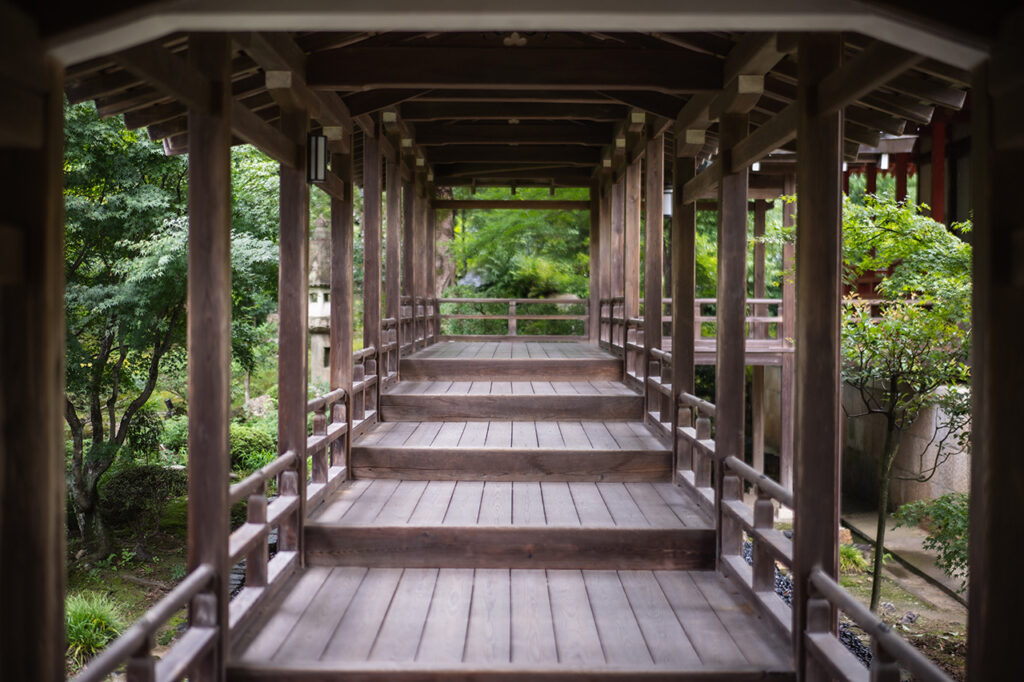

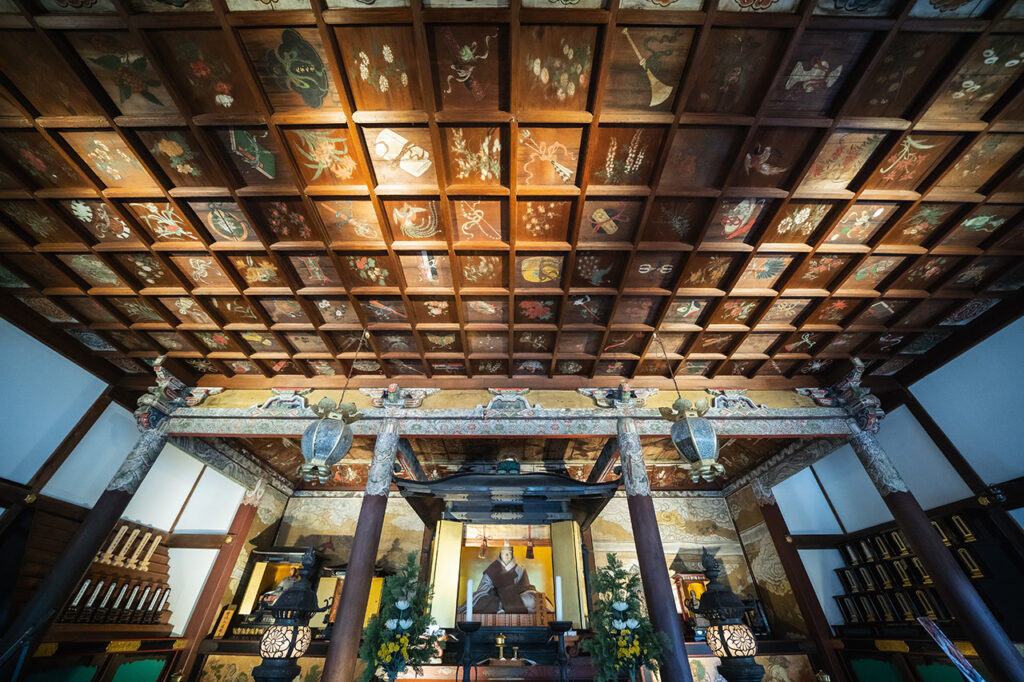
There is also a magnificent cloud dragon on the ceiling of Yasui-do Hall.

The Gokaido of Rengekoin, the former Yasui Monzeki temple in Higashiyama, was moved to this building in 1841. Produced in the mid-Edo period. The painter is unknown. The mirror panel of the kakutei ceiling depicts flowers, birds, and Buddhist ritual implements, and the mirror ceiling of the folded ceiling in the back depicts clouds and dragons.
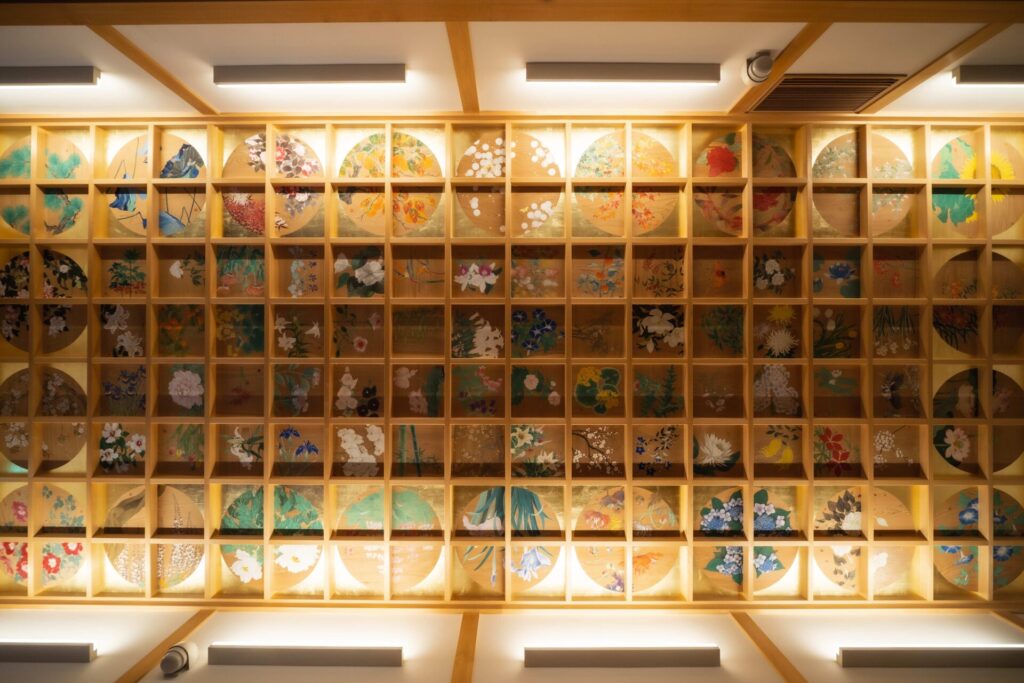
Heisei-born Renge-den Ceiling Painting

The theme of the Renge-den Ceiling Paintings on the banks of Osawa Pond is "Hana Mandala". The exhibition features 78 pieces created by 73 Saga Art College officials in 2009.
Shinkyomae-den, which stands straight north from the Imperial Audience Hall, is a relocated version of the Feast Hall built when Emperor Taisho ascended to the throne. The Imperial Seal Heart Sutra Hall, which can be seen from the Shinkyomae-den, houses the Hannya Shingyo Sutra handwritten by Emperor Saga and other emperors. Visitors can experience the experience of practicing the Hannya Shingyo (Heart Sutra) for one character and one wish.
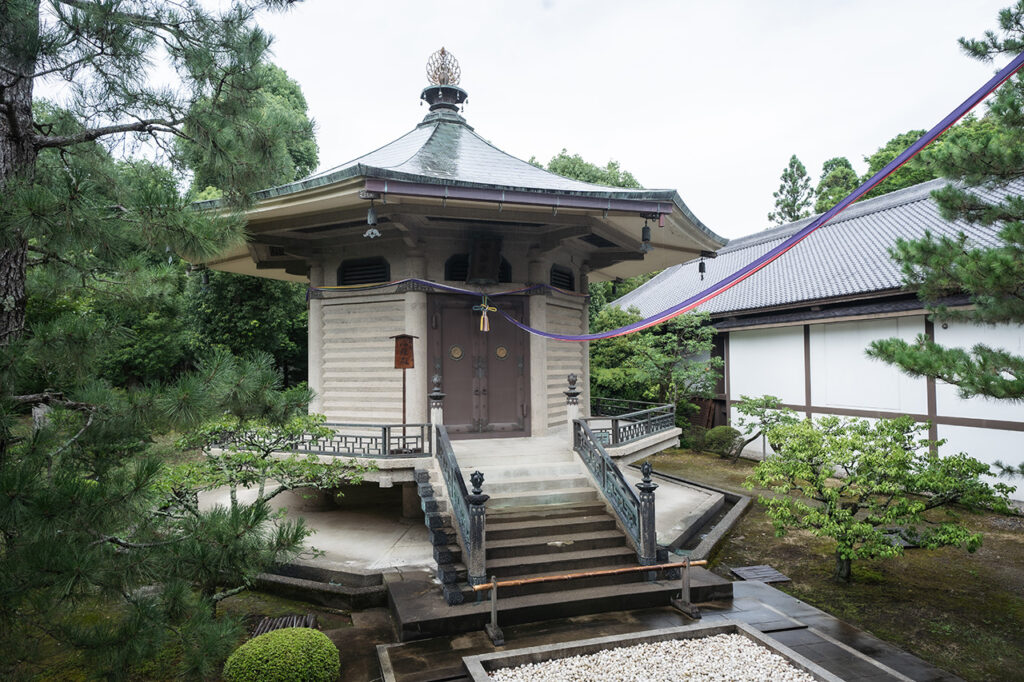

This is a women's palace which was used by Kazuko Tofukumonin, the daughter of Hidetada, the second Tokugawa Shogun, and was given by Emperor Gosui in the early Edo period. There are many highlights such as the folding-kogumi gable ceiling in the Botan-no-Ma (Peony Room), which represents a high class room, and the cicada decorations on the clasps of the jitomi (latticed shutters).
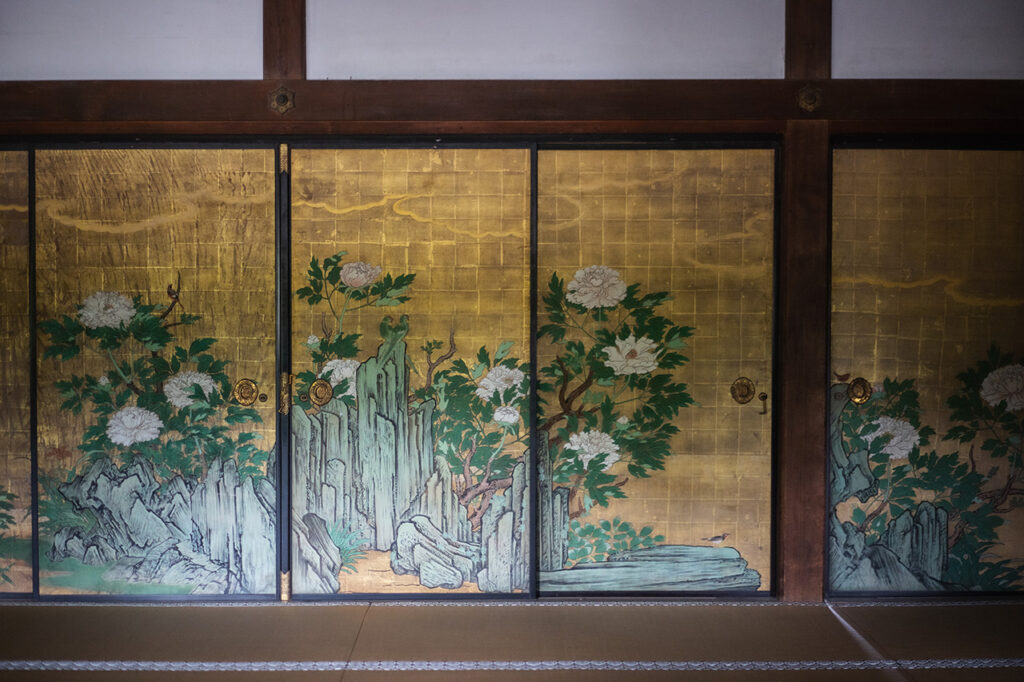

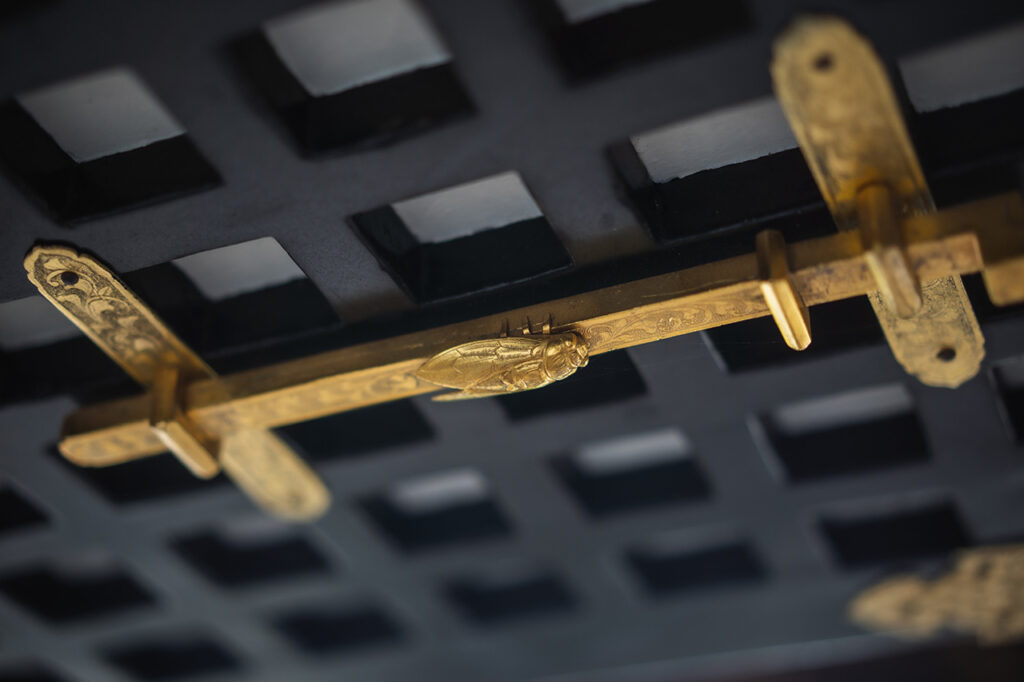

Located to the east of the Daikakuji Temple grounds, Osawa Pond is Japan's oldest man-made forest garden, which was created when Emperor Saga built his detached palace. Visitors can enjoy seasonal scenery such as water lilies and lotus in bloom in summer and a water mirror reflecting the colors of autumn leaves in fall.
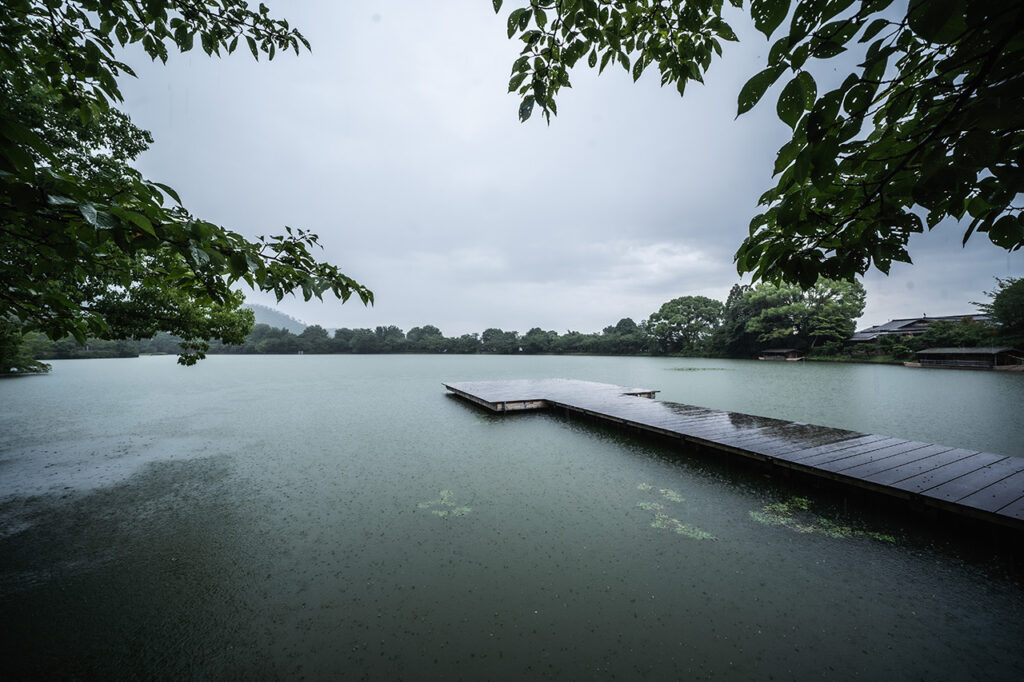

A special exhibition, "Eternally Inherited: Heavy Treasures of the Genji" is being held at Reihokan through September 12. The exhibition introduces the history of famous swords, including the Usukiryu (also known as Kneemaru), which has been passed down as a treasure of the Genji clan, as well as English labels from the sword hunting conducted by the GHQ after the war. Fee: 500 yen.
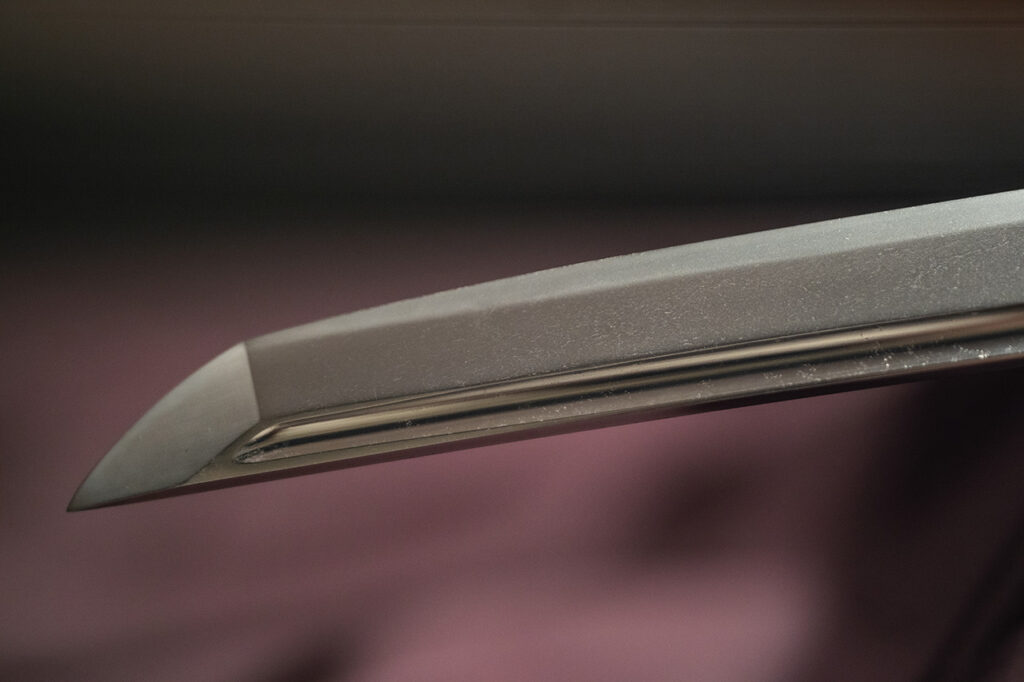

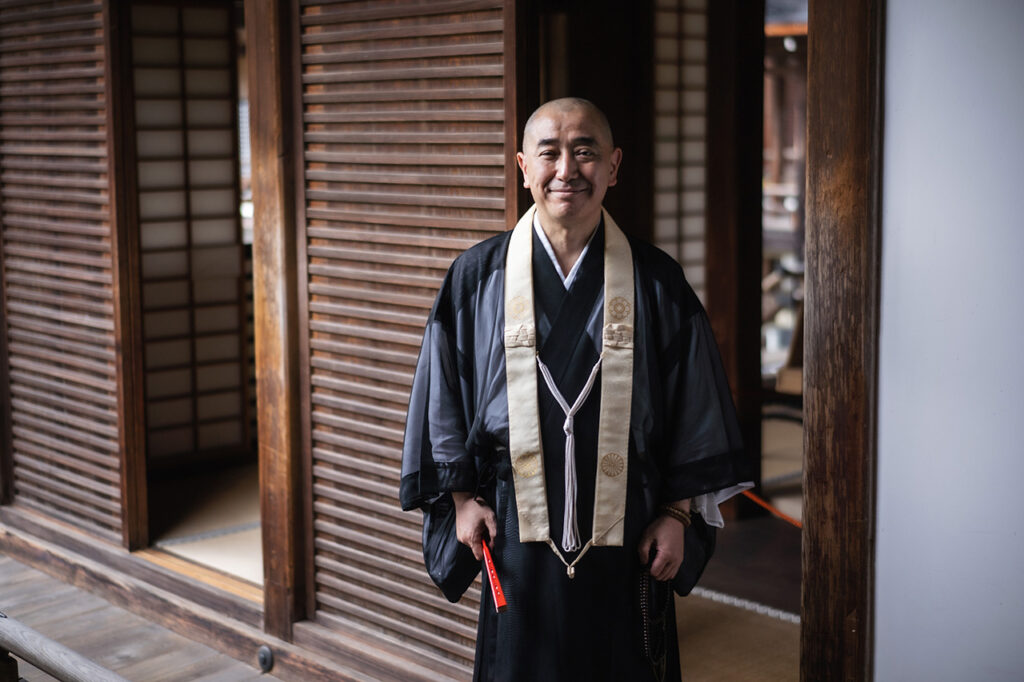

Over 600 interviews per year! An order site carefully selected by the editors who knows Kyoto and Shiga.
nowOfficial LINE friend registration500 yen OFF coupon is being issued!
 News
News Feature article
Feature article Featured event
Featured event